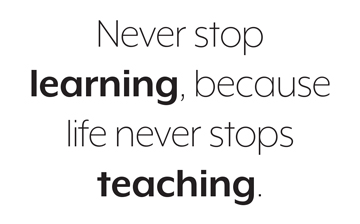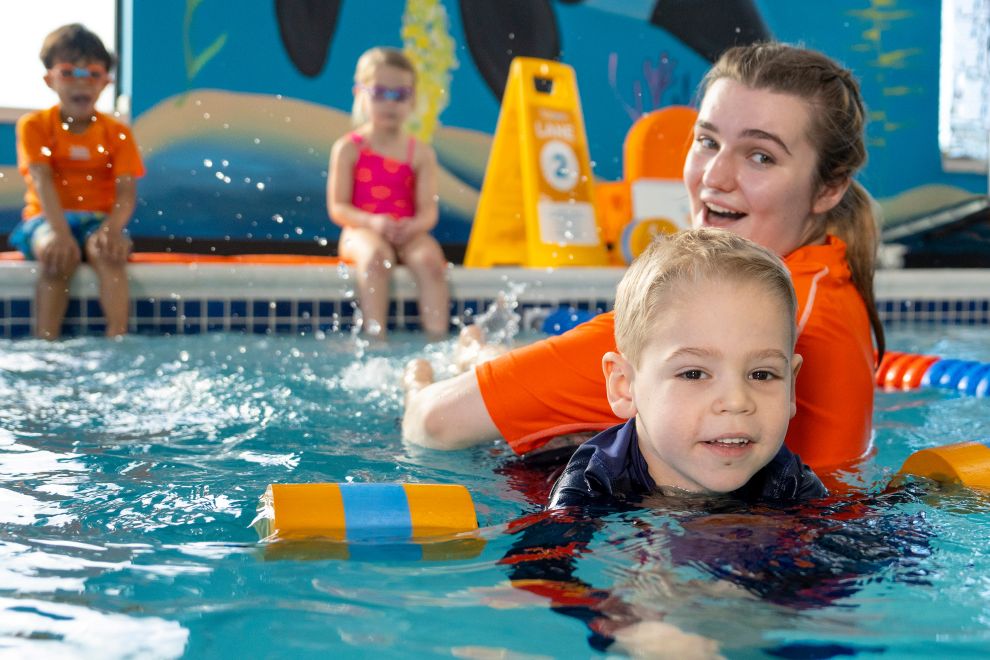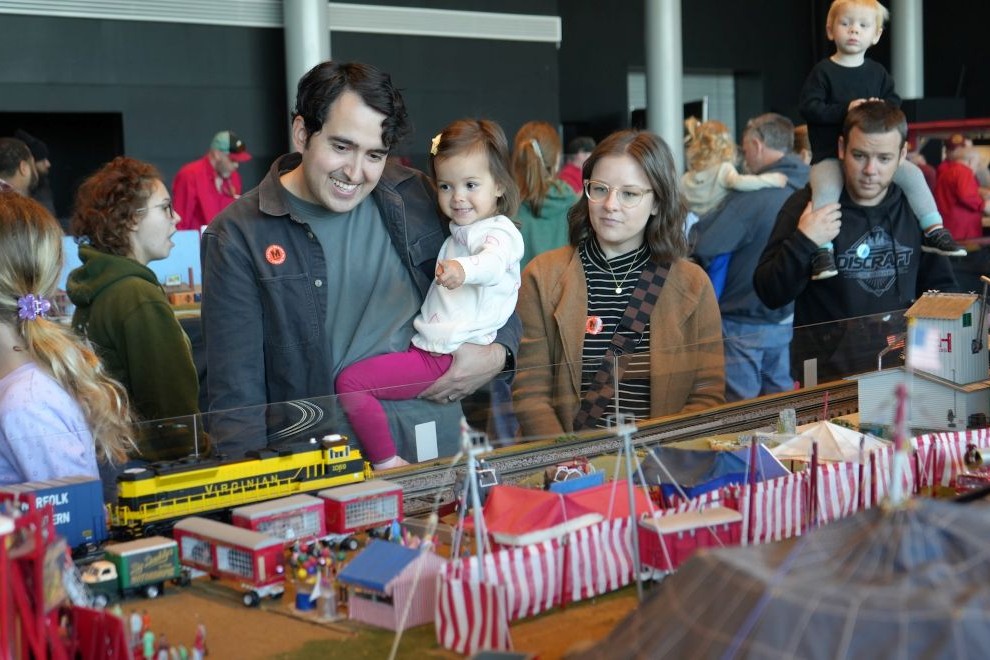What in the world was I thinking?” It was one of many questions I asked myself as I fumbled trying to connect my phone to a security app that would’ve allowed me through the university’s firewall. Here was one more thing I had yet to figure out as a newly enrolled middle-aged student. Along with registering for classes, uploading vaccine records, and accessing the entire library, everything was now online, including most of my coursework.
I’d decided to go back to school for my Doctor of Nursing Practice. A former school nurse with a master’s degree in psychiatric nursing, I hoped to use this new degree to help address the nation’s escalating teen mental health crisis.
Twenty-seven years had passed since my first round of graduate school. I was now fifty-three. Everything had changed.
In the early nineties, grad school was a full-time affair that came with instant camaraderie. Onsite classes, lively with discussion, started early with coffee in hand. Class conversation continued over lunch, where we lingered over food portions that would now be deemed ridiculously small, paid for with change that people no longer carry.
Following afternoon classes, I cherished the peace of the library the most. Back then, writing a paper required fancy legwork to find supporting literature. Each publication had its own colored binding, and I enjoyed searching among the rows of rainbow-lined bookshelves in search of articles. Often, the wanted volume was missing or required an inter-library loan that could take weeks. It was a thrill to find the research journal you hunted. Making copies to be used for later quotes meant hours in line at the library’s Xerox machine. I remember the empty time with fondness; it was a calm of hushed waiting. No cell phones or social media to distract.
Now, every piece of scholarly literature is at your fingertips to be reviewed online until your eyes cross. Voluminous reference lists are easily built and cited into APA format with a simple click. Learning at home, I never need to leave my desk. And although this ease feels like magic, I miss gliding between those rainbow rows.
My current program is executive format, which means we have in-person class twice a month. The rest of the coursework is self-taught using an abundance of links to textbooks, literature, websites, YouTube videos, and recorded Zoom classes, in case you missed points the first go-round. It can take hours of headache-inducing screen time to work through material. When we meet in-person, I miss having classmates who really know each other instead of ones who scatter as soon as class ends.
 The only thing that makes our advanced practice group linger is free food. One afternoon, the offer of sandwiches brought our statistics class together for the first time. Removing masks to eat, we tried to figure out who was who.
The only thing that makes our advanced practice group linger is free food. One afternoon, the offer of sandwiches brought our statistics class together for the first time. Removing masks to eat, we tried to figure out who was who.
“You’re the one who writes everything in notebooks!” a young (at least to me) nurse practitioner’s eyes flashed at me with recognition.
I sighed wearily to myself. She’d only meant it as an identifier, but I took it as one more reason why I may be too old for this journey. In those early months, I often questioned my decision.
I don’t know why I thought being older would somehow make me immune to the stress of going back to school. I suppose it was because I had survived all the original scares. From middle school bullying to extreme high school peer pressure, I defied the odds surrounding my adolescence. I’d scrapped my way through the education system, doing my best not to shine academically in a high school where being smart could get you beat up, while eventually earning scholarships that paid my way through college and grad school. What could defeat me at this point?
I already knew the answer: statistics.
While the technology learning curve proved a challenging mountain to climb, statistics was my Mt. Everest. I knew I had to conquer it to get to what I considered the fun stuff – the classes on the other side, heavier on theory and writing, where I trusted my abilities.
During class one day, I bravely raised my hand multiple times as I struggled with the software (SPSS) we used to run a statistical analysis. Frustrated, I finally stopped trying and planned to figure it out at home, using vetted YouTube videos (who are these people who make statistics videos for fun?) and our aptly titled textbook, SPSS Survival Manual.
In this mood, I started to collect my colorful assortment of spirals when a note plopped on my desk. A tightly folded piece of paper, just like in the olden days. Inside was the name and number of one of my classmates – the young nurse practitioner who had identified me earlier as, “notetaker who still uses notebooks.”
“I used SPSS in my last job. Call me anytime – I’m happy to help!” She called to me as she rushed out the door to her primary care job at a CVS Minute Clinic.
Although I never reached out to claim this random act of kindness (instead, I kept the now crumpled piece of paper like a good luck charm in the bottom of my backpack), something about this human connection gave me the nerve to hang on a little longer. Slowly, I started to get my bearings, and the brand-new overwhelming started to become the everyday familiar.
Statistics wasn’t the warmest welcome, but passing eliminated any fear of getting through the rest of the program. And now, almost a year in, I’m excited as I see the courses coming together that will help me reach my professional goals.
The truth is, anything new is stressful. That’s why this essay about a fifty-something woman returning to grad school applies to many students – whether they’re starting middle school or career switching. Aside from the thrill of lifelong learning, I believe I will make a greater contribution to the nursing profession and the world because I went back to school in my fifties. Wisdom really does come from lived experience, and I’m at a point in my life where I have a very clear vision of how I want to use my education to help others.
Despite missing the way grad school used to be – multiple, long, in-person days and hours in the stacks of real libraries – I’ve learned to embrace the executive format of learning. It’s what allows me to learn alongside people who care for others round-the-clock, specializing in everything from critical care to outpatient clinics to nurse-midwifery to psychiatry.
I look forward to traveling the seventy-five miles to campus twice a month. It’s almost like a mini-vacation. Aside from the thrill of seeing my research project begin to take shape, I can’t wait to walk amidst the beautiful historic grounds, try a new place to eat, and match my colleagues’ faces with their online discussion comments.
People still scatter after class; it’s that kind of place. Lives are busy. There are night shifts to work, kids to pick up from school, and many folks in the program live even farther away from campus than I do. But I’ve found my way to an independent place of contentment. Sometimes I even splurge on a night in a campus hotel, so I can spend the next day immersed in the quiet library – an old friend welcoming me back as I slowly master new ways of learning.
And who knows, maybe next semester I’ll pull out that nurse practitioner’s number and see if she’d like to get coffee sometime.





